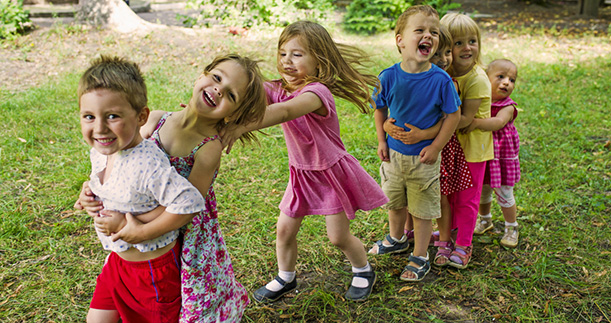By the age of three years children identify themselves in a cultural group. They choose toys and clothes that are similar to those of their friends and speak like them. They understand that at the heart of this identification there is a concept: “We” do things this way. Children who want to belong to a particular group accept the norms that all the others accept. They also see that those norms are enforced. Accepting and enforcing norms are not behaviors that these children learn from their parents. They just have to see the children of that group follow them. Various studies show that children are strict enforcers of norms only with children of their group. With children who belong to another group they do not enforce the norm. For example, if during a football match the ‘foreign’ team mate does not kick the ball and score a goal although having the chance to do so he is excused by his team. A child ‘from another country’ who after dinner goes to bed with his clothes on is looked at with interest but nor with incredulity. We are pre disposed to follow social norms from a very young age and this is how societies form. Many researchers believe that understanding the basics of human communication is necessary to meet important challenges. For example some conflicts between cultures or within our society require a scientific approach.


Leave a Reply